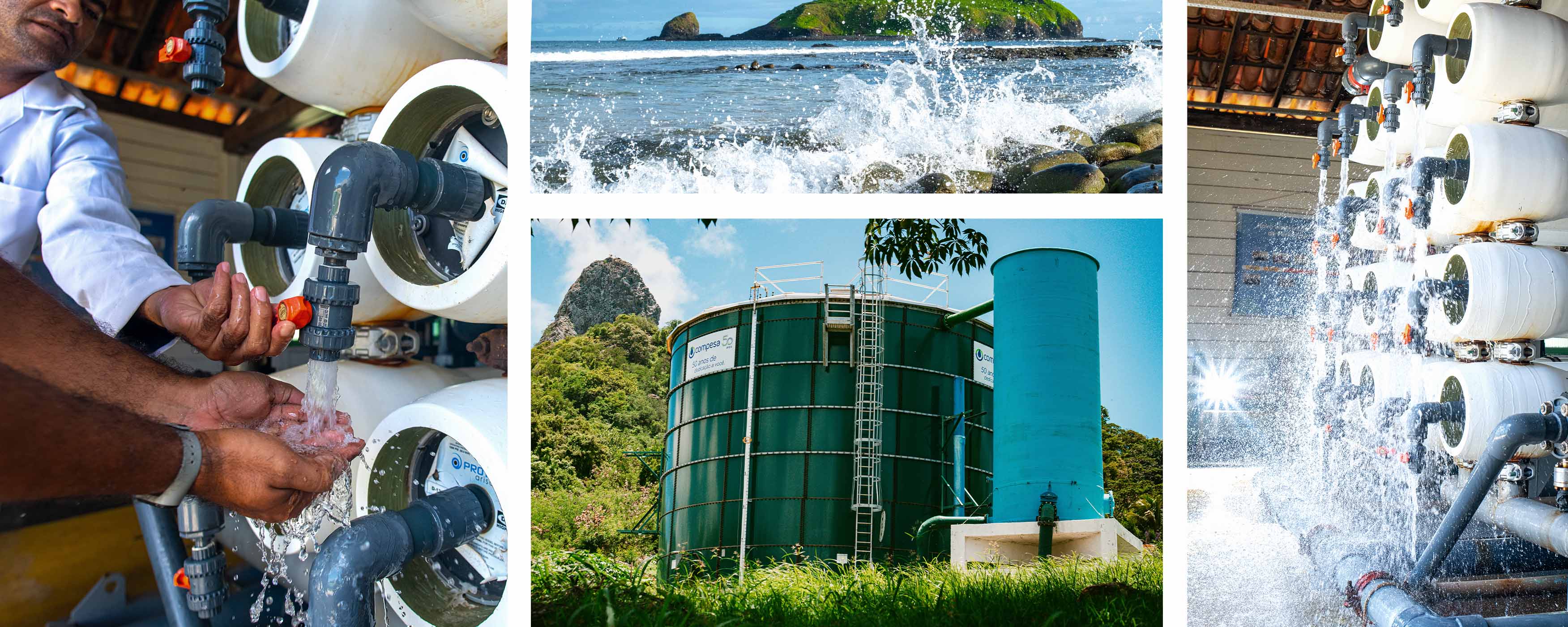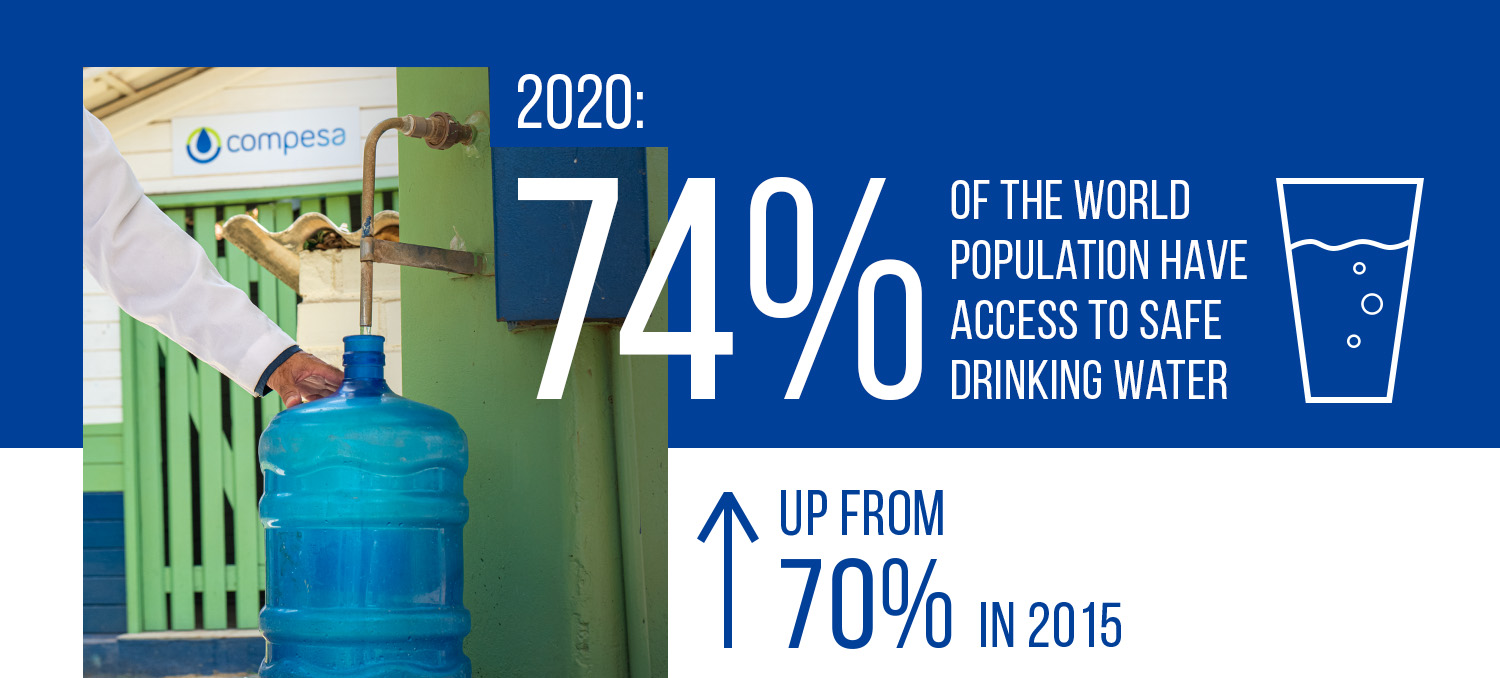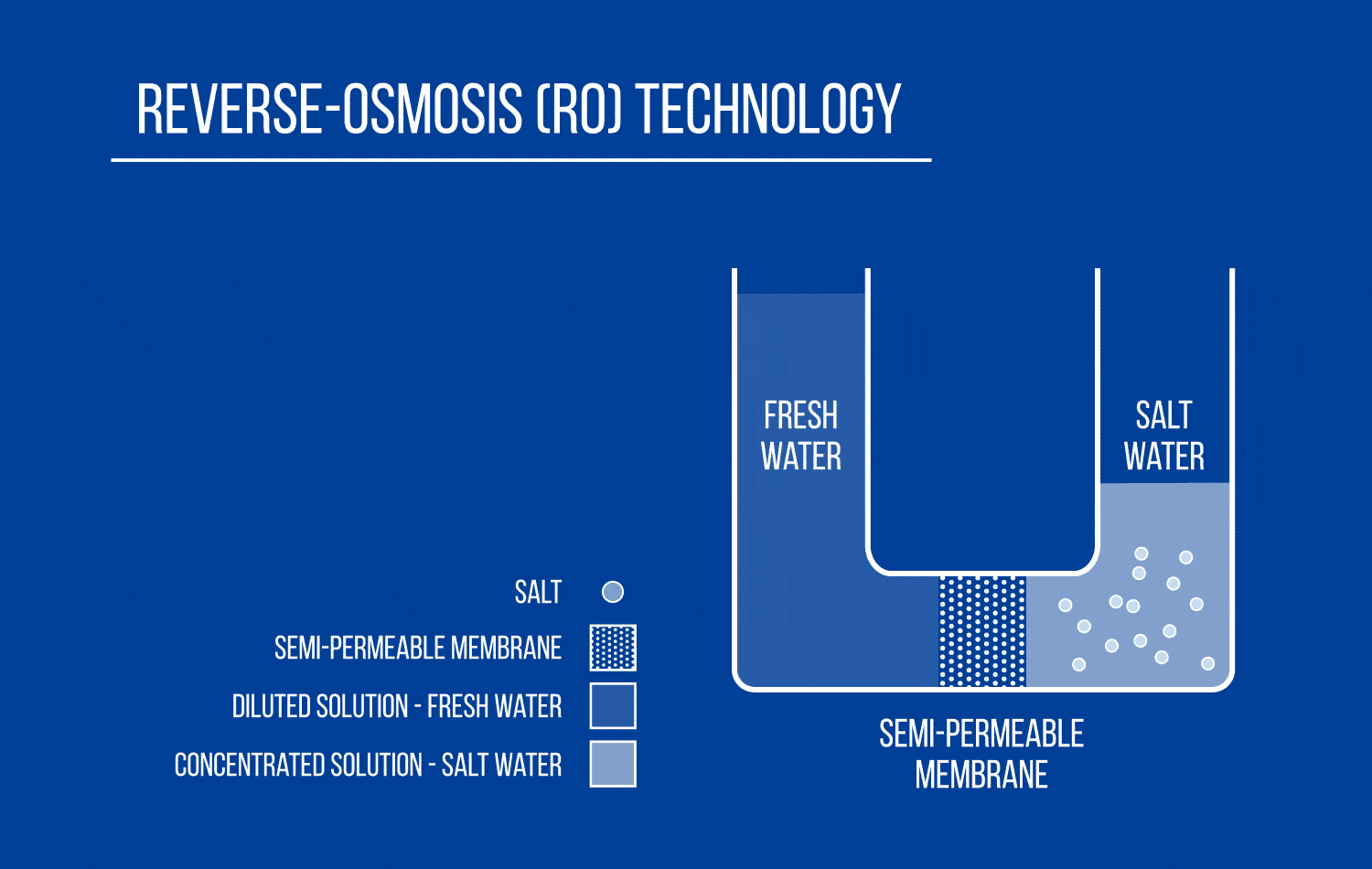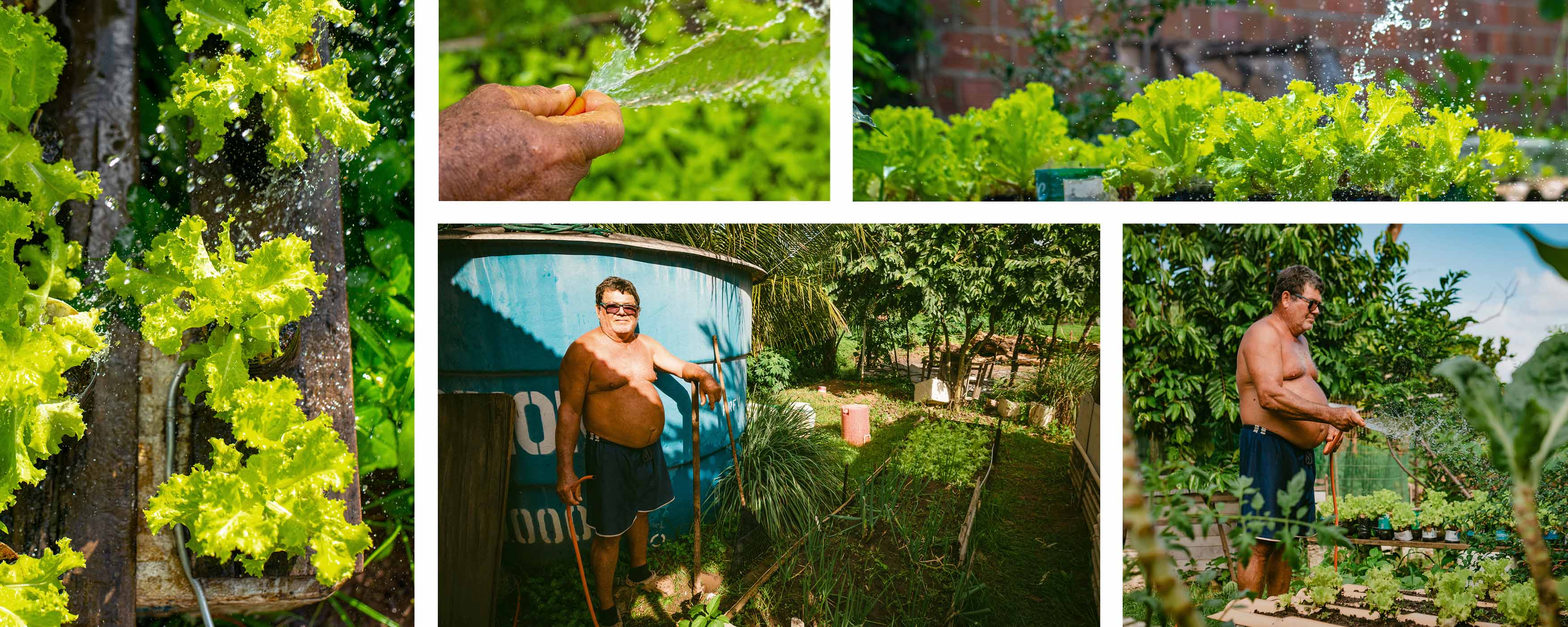Problem in Paradise: Solving a Water Crisis
A breath-taking tropical archipelago with towering rock sculptures that loom over sweeping beaches and lush, turquoise waters teeming with marine life, Fernando de Noronha feels untouched by the rest of the world.
The remote volcanic island chain sits out in the Atlantic Ocean some 220 miles (354 kilometers) off the northeastern coast of Brazil. Its protected status means only a limited number of people can set foot on its shores.
For those lucky enough to make the trip, this vibrant natural wilderness has everything.
But until recently, the reality for those actually living on Fernando de Noronha was very different. Despite being surrounded by ocean, the 4,000 islanders struggled for year-round access to clean water. Existing infrastructure – which included a reservoir for collecting rainwater and another smaller system for seawater desalination – was insufficient to meet demand, while droughts during the dry season hit other freshwater sources such as natural springs.
“Anyone looking at those crystalline waters could not imagine that the island goes through periods of severe drought,” explained Artur Ricardo Macedo dos Santos, Business Manager at Compesa, the utility company responsible for water on the island, which is part of Brazil’s Pernambuco state.
“It rains on average four months a year -- from March until June -- and 90% of that rainwater returns to the sea due to the natural drainage of the rocky terrain.”

Additional water had to be shipped in from the Brazilian mainland and rationed, so the islanders had to make it last.
“We only had fresh water once or twice a week, either through the island’s limited supplies or when it rained,” recalled Santiago Salazar, a local photographer who has lived on Fernando de Noronha for five years.
“People would spend a lot of money on water storage tanks,” he said. “Families in particular had to ensure they had enough storage capacity to cope when water was scarce, so could only do basic things like washing clothes on the day supplies came. It was hard and very stressful.”
A Basic Human Right
Across the globe, the number of people with access to safe water – the most basic human right – is increasing. In 2020, 74% of the world experienced safely managed drinking water services – up from 70% in 2015. However, that leaves around two billion people living without clean drinking water, with the majority of those people living in rural and more geographically isolated areas.[1]

Compesa decided the solution would be a new desalination system to purify seawater, something the island chain did have in abundance.[2] They partnered with global water treatment specialist Fluence to build the plant.
But this was no ordinary project.
“It’s a unique environment with very special challenges,” said Jose Roberto Ramos, New Business Development Manager at Fluence. “The islands are a Brazilian ecological treasure so there are a lot of regulations around noise levels, the use of materials such as chemicals, and even transporting equipment from the mainland to the island.”
With the plant in place, Fluence would then install innovative reverse-osmosis (RO) technology developed by Japan’s Toray to remove contaminants from seawater by pumping it through a semipermeable membrane. This membrane – made up of synthetic polymers and specifically designed for seawater desalination – requires less energy to filter out sodium and other microscopic particles but produces much safer drinking water than alternative processes.

“This technology is sustainable,” said Ramos. “It doesn’t create pollution, with salt removed from the water returning to the sea diluted.”
And according to Compesa, it’s simple to manage.
“Water quality can be easily controlled, and we’re able to identify the need for maintenance or replacement of the Toray membranes by monitoring the accompanying instrumentation,” explained dos Santos.
Once the plant and new pump sets on the island were up and running in 2021, clean-water production increased almost five-fold, with capacity jumping to 72 cubic meters of water per hour (m³/h), compared with 15 cubic meters per hour previously.[3] This meant the island no longer had to rely on imported drinking water to shore up supplies.
A Global Solution
Fluence’s Ramos believes this is a greener, more efficient and cost-effective solution for tackling water scarcity in other communities across the globe – something that resonates deeply with Toray.
In Southern California, which is particularly drought-prone, Toray has been playing a crucial role in securing a sustainable water supply for the region. Los Angeles County had been importing water at great expense from both the Colorado River and Northern California until the local authority established the Water Independence Now (WIW) [4] project to end this reliance by focusing on locally available water sources such as wastewater.
The Albert Robles Center,[5] an advanced water treatment facility, was opened in 2019 and uses Toray technology to enable a three-step process of ultrafiltration, reverse osmosis, and ultraviolet light with advanced oxidation, to purify up to 56,000 cubic meters per day of treated wastewater pumped in from the San Jose Creek Water Reclamation Plant. Previously, the recycled water was pumped back into the ocean. Now it provides drinking water for up to four million people across Los Angeles County.
Peace of Mind
Back on Fernando de Noronha, the impact of its own new water treatment plant on the lives of the islanders has been remarkable.
“People are much happier,” said Salazar. “Not only is the water quality far better, they have peace of mind not having to think about keeping large water reserves. After a day at work, they know they can go home and take a bath anytime.

“Another noticeable difference is that many people now keep small vegetable gardens – something that was unthinkable before because water was simply too precious.”
Before the new plant, Antonio Jose da Silva -- who was born on the island -- had to tap water from makeshift wells when supplies ran dry. “There was no daily supply,” he said. “And there was never enough water for everyone.
“But now we have tap water and can support a growing population. In 1980, there were only 800 people here. Now there are more than 4,000.”
Toray's Mission
For Toray, developing technology for the greater good is in its DNA.
“Sustainability is the most important global issue of the 21st century,” said Satoshi Shimoyama, Corporate Vice President of Toray’s Water Treatment & Environment Division. “Climate change, water scarcity, and resource depletion are just some of the mounting environmental challenges facing our planet.
“Since Toray was founded in 1926, we have always believed that materials can change lives, true to our fundamental corporate principle of contributing to society. We make it our mission to deliver innovative technologies and advanced materials that provide real solutions to the challenges the world faces balancing development and sustainability.
“Membrane technology is one of those. Our mission is to triple the total annual volume of water being treated globally by 2030.”
Learn more about Toray innovative membrane technology.
Related Content:
Straight Path: The inspirational story of Tri Huynh, President & CEO, Toray Membrane USA, who came to the US as a political refugee and now leads the company's drive in the United States to produce fresh water for millions of people.
